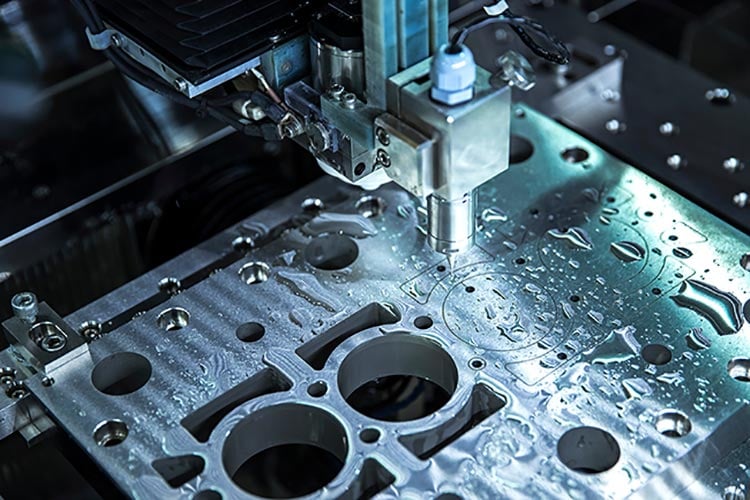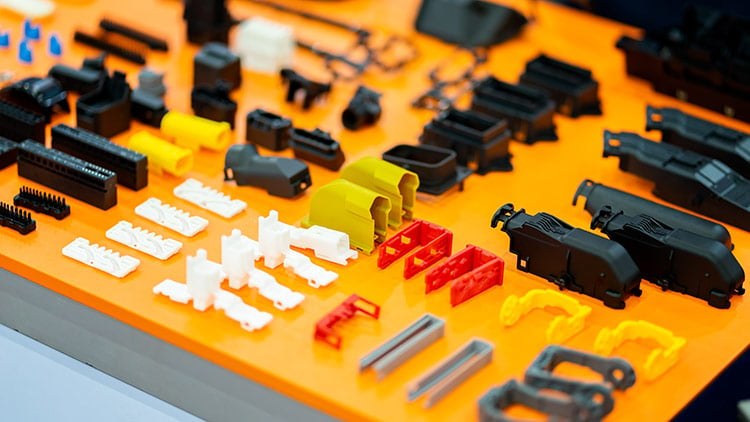
When you are starting a business, one of the most important decisions you will make is how to produce your products. There are a number of low volume manufacturing methods available, each with its own advantages and disadvantages.
For example, CNC machining can be useful for low volume production of metal parts. Injection molding is well-suited for producing high volumes of plastic parts quickly and cheaply. And additive manufacturing is great during the prototyping phase.
The best low volume manufacturing method for your business will depend on a number of factors, including the type of product you are making, the quantity you need to produce, and your budget.
In this blog post, we will introduce you to all the low volume manufacturing methods so that you can make an informed decision about which one is right for your business. We will also recommend some of the best low volume manufacturing companies so that you can get started right away!
What is Low Volume Manufacturing?
Low volume manufacturing refers to the process of manufacturing products in small quantities. This type of manufacturing is typically used for prototypes, custom products, or limited-edition runs.
Low volume manufacturers generally have shorter lead times and can be more flexible with design changes than high volume manufacturers. This makes low volume manufacturing ideal for businesses that are still in the prototyping phase or those that need to make small batches of products.
Who Should Use Low Volume Manufacturing Methods?
Low volume manufacturing methods are best suited for businesses that need short lead times, are still in the prototyping phase, or need to make small batches of products.
For example, if you’re a startup testing a new product in the market, you’ll want to use a low volume manufacturing method. This will allow you to get your product to market quickly and make changes to the design as needed.
Similarly, if you have an existing product that isn’t selling well, but you think there’s potential for it, low volume manufacturing methods can help you test the market without making a large investment.
Other industries such as automotive, aerospace, and defense also use low volume manufacturing for prototyping and small batch production. Airplane seats, car bumpers, and medical implants are all examples of products that have been produced using low volume manufacturing methods.
Check out some of the coolest products made by low volume manufacturing on our blog.
Common Low Volume Manufacturing Methods
There are a few different low volume manufacturing methods that are commonly used. We'll break these down below.
CNC Machining
CNC machining is a low volume manufacturing method that uses computer-controlled cutting tools to remove material from a workpiece. This method can be used to create complex three-dimensional parts with a high degree of accuracy.
CNC machining is a great choice for low volume manufacturing because it is relatively quick and can produce highly accurate and repeatable products. Additionally, CNC machining can be used to create parts from a wide variety of materials, including metals, plastics, and wood composites.
One downside of CNC machining is that specialized tools may also need to be ordered before production begins. Setting up a CNC machine can also be time-consuming, which adds to the cost of the end product.
Advantages of CNC Machining:
- Precise and repeatable
- Can produce complex parts
- Fast turnaround times
- Repeatable and accurate outputs
Drawbacks of CNC Machining:
- More expensive than some other methods
- Lead times can be longer
- Restrictions in manufacturing materials
- More material waste
Applications: Medical devices, aerospace components, automotive parts, niche prototyping.
Injection Molding
Injection molding is the most common method of low volume manufacturing. Thermoplastics are melted and injected into a mold where they cool and solidify into the desired shape. Injection molding is generally faster than CNC machining and is ideal for producing prototypes or testing new products.
Low volume injection molding is not generally recommended for production runs of more than 500 parts. Injection molding is also not recommended for products that require tight tolerances or intricate designs.
Advantages of Injection Molding:
- Inexpensive for low volumes
- Can produce very intricate designs
- Parts can be produced quickly
Drawbacks of Injection Molding:
- High setup and tooling costs
- Long lead times
- Materials may degrade over time
Applications: medical prototypes, door panels, center consoles, car bumpers.

Additive Manufacturing
Another important low volume manufacturing method is additive manufacturing. Additive manufacturing is the process of building three-dimensional objects from a digital file. This manufacturing method is also known as “rapid prototyping” or “direct digital manufacturing”.
In additive manufacturing, the object is built one layer at a time. This process is different from subtractive manufacturing, in which an object is created by cutting away at a solid block of material until the final product is complete.
Advantages of Additive Manufacturing:
- Can create functionally-graded materials
- Parts can be produced quickly
- Flexible production runs
- Low setup costs
Drawbacks of Additive Manufacturing:
- May require post-processing to smooth edges
- Difficulties with material defects
- Not suitable for large volume production
Applications: hearing aids, prosthetics, holding nests, fixtures and jigs.
Low Volume Manufacturing Companies
If you're looking for a low volume manufacturing company to produce your parts, there are a few things you should keep in mind. First, what is the quantity of parts you need? Second, what is your budget for production? Third, what is the timeline for delivery?
Once you have answers to these questions, you can start to research different companies that offer low volume manufacturing services. Below are a few things to keep in mind when looking for a low volume manufacturing company.
- Location of the manufacturer: Depending on where you are located, it may make sense to choose a manufacturer that is close by. This can help reduce shipping costs and lead times.
- Size of the manufacturer: The size of the low volume manufacturing company you choose should be based on the number of parts you need and your budget for production. If you only need a few parts, you may be able to work with a smaller manufacturer. If you need thousands of parts, you will need to choose a larger company that has the capacity to produce at that volume.
- Services offered: When looking for a low volume manufacturing company, be sure to check what services they offer. Some companies only offer high volume production, while others may also offer low volume production, prototyping, assembly, and packaging. Be sure to ask about the minimum quantity for an order, as some companies have a minimum order quantity (MOQ) for low volume orders.
- Lead time: The lead time is the amount of time it takes from when you place an order to when you receive your parts. Lead times can vary depending on the company, the manufacturing process, and the complexity of the parts. Be sure to ask about lead times before placing an order.
Looking for low volume manufacturing services? RCO Engineering offers high-quality, cost-effective solutions with quick turnaround times. Plus, we're an American manufacturing company so you can save money on shipping and manufacturing. Contact us today to learn more!

Comments